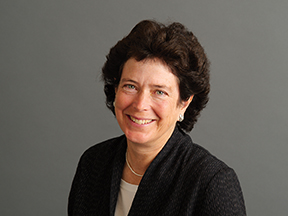
Summer 2019 ForestLife
President’s Letter
Finding common ground
 As we were preparing this newsletter, there were armed militia threats in Oregon, ostensibly protesting proposed legislation to address the very real and present dangers of climate change. While at least four major timber companies in Oregon supported climate action, loggers were out in front of Salem’s capitol buildings protesting the same proposed action. The threats of climate change already in front of us are clear. A number of states—from Colorado and Wyoming to New York and Massachusetts—are taking bold steps to address them, even as others, like New Jersey and Virginia, are caught in partisan deadlock. It can seem that the “two sides” of this issue cannot talk to one another.
As we were preparing this newsletter, there were armed militia threats in Oregon, ostensibly protesting proposed legislation to address the very real and present dangers of climate change. While at least four major timber companies in Oregon supported climate action, loggers were out in front of Salem’s capitol buildings protesting the same proposed action. The threats of climate change already in front of us are clear. A number of states—from Colorado and Wyoming to New York and Massachusetts—are taking bold steps to address them, even as others, like New Jersey and Virginia, are caught in partisan deadlock. It can seem that the “two sides” of this issue cannot talk to one another.
However, a recent study titled “The Perception Gap,” conducted by D. Yudkin, S. Hawkins, and T. Dixon as part of the “More in Common” project, shows that Americans are actually far closer on their positions than they imagine. Media and more extreme groups dominate the debate, while the large majority of Americans actually recognize the climate crisis (even if they use different words to describe it) and support actions to lessen the dangers it poses, from floods to fires to the loss of life.
Where is the room for common ground? I believe we can find it literally in our common ground, the land that binds us together and binds us to future generations with whom we share this one and only planet home.
Land conservation, especially working lands conservation, has more support across party lines than any other issue in America today. From extending tax benefits for donations of conservation easements to fully funding the Land and Water Conservation Fund, recent legislative history confirms this at the national level, as do innumerable bond acts to support conservation at the local and state levels. We must build on this support, because we cannot solve the climate crisis without engaging the power of the lands sector for both mitigation and adaptation.
Addressing climate change is essential for survival—last year’s fires and this year’s floods across America underscore that. It is also essential for a richer and more resilient rural economy. California is acknowledging that with increasing investments in lands. From funding the conservation of working forests like Black Butte, to helping purchase cleaner logging trucks and methane digesters, to restoring wetlands and meadows and supporting carbon-rich farming and grazing practices, the state is modeling a way forward. These investments lead to more productive forests, farms, and wildlife habitats, and ensure clean, cool water for millions of people.
Right now, we have a unique opportunity—and responsibility—to unite across the political spectrum in support of conserving land for all of us and our climate, and a livable future our children can inherit.

Laurie A. Wayburn
More in this Issue of ForestLife
- President’s Letter
- Black Butte: Investing in forests for a healthy climate
- Climate change isn’t “on the way.” It’s already here.
- Forests’ vital role the focus at Forest Fete
- A new model for water security in the face of climate change
- Donor Profile: Ivan Samuels
- PFT announces the Springs for Life ForestWater Alliance
- Back to the land at Green Gorge
- Rewarding landowners for doing the right thing
